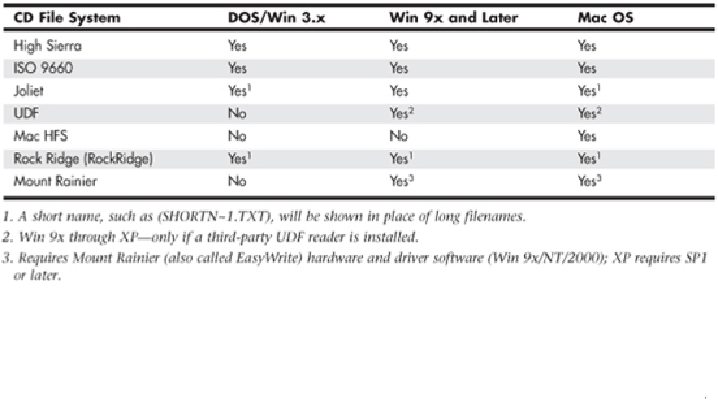Hardware Reference
In-Depth Information
Not all optical disc file system formats can be read by all OSs.
Table 11.22
shows the
primary file systems used and which OSs support them.
Table 11.22 Optical Disc File System Formats
Note
TheMacHFSandUNIXRockRidgefilesystemsarenotsupportedbyPCOSssuchasDOS
and Windows and therefore are not covered in depth here.
High Sierra
To make optical discs readable on all systems without having to develop custom file sys-
tems and drivers, it was in the best interests of all PC hardware and software manufactur-
ers to resolve the optical file format standardization issue. In 1985, representatives from
TMS, DEC, Microsoft, Hitachi, LaserData, Sony, Apple, Philips, 3M, Video Tools, Re-
ference Technology, and Xebec met at what was then called the High Sierra Hotel and
Casino in Lake Tahoe, Nevada, to create a common logical format and file structure for
CD-ROMs. In 1986, they jointly published this standard as the “Working Paper for In-
formation Processing: Volume and File Structure of CD-ROM Optical Discs for Inform-
ation Exchange (1986).” This standard was subsequently referred to as the High Sierra
format.
This agreement enabled all drives using the appropriate driver (such as MSCDEX.EXE
suppliedbyMicrosoftwithDOS)toreadallHighSierraformatdiscs,openingthewayfor
the mass production and acceptance of CD-ROM software publishing. Adoption of this
standard also enabled disc publishers to provide cross-platform support for their software
and easily manufacture discs for DOS, UNIX, and other OS formats. Without this agree-




